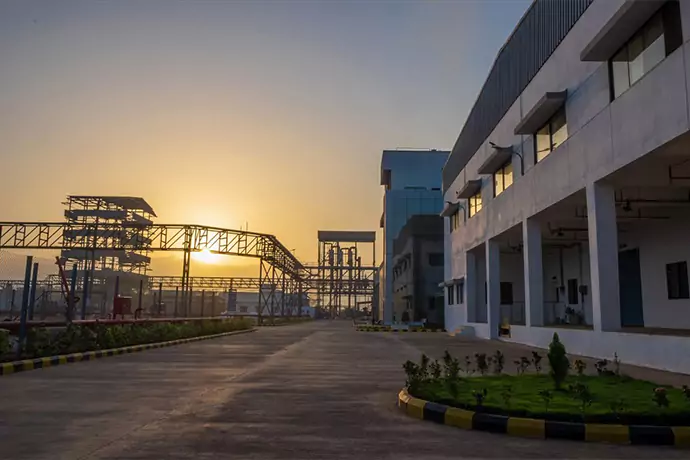-
Blogs
-
Home > Blogs > Global Chemical Manufacturing Outlook: Part-2
"GLOBAL CHEMICAL MANUFACTURING OUTLOOK: PART-2 INDIAN CHEMICAL INDUSTRY"

The Indian Chemical Industry - Outlook
The Indian chemical manufacturing industry has emerged as a significant player in
the global market. India has developed into an important hub for the manufacture of
a wide variety of chemicals because of its abundant resource base and competent
labour force. Petrochemicals, medicines, fertilizers, speciality chemicals, and dyes
are just a few of the industries it covers. Numerous global corporations have
decided to set up manufacturing operations in India due to the nation's advantageous
geographic position and government initiatives. Due to expanding local consumption
and demand from global markets, the industry has experienced tremendous expansion in
recent years. Technology and technological developments have also accelerated the
industry's expansion by making it possible to produce high-quality and economical
chemicals. The Indian chemical manufacturing sector is positioned to continue
growing thanks to its strong infrastructure and dedication to sustainable practices,
which will significantly contribute to the nation's economic development. Over the
last ten years, the chemical sector in India has expanded by more than 10%. India
ranks eighth in imports and fourteenth in exports of chemical products. It is
anticipated that the Indian chemicals and petrochemicals sector will attract
investments of around INR 8 lakh crore. Speciality chemicals account for 22% of the
Indian market for chemicals and petrochemicals. In order to reduce its reliance on
imports and increase exports of chemical goods, India's chemical sector has set a
target of reaching $300 billion by 2025. This will require an expenditure of between
$75 and $100 billion.
Over the next two decades, India is anticipated to account for more than a fifth of the increase in worldwide chemical use. According to research by McKinsey, domestic demand is expected to reach USD 1,000 billion by 2040. The chemical industry is expected to triple its global market share by 2040, growing 11–12% between 2021 and 2027 and 7–10% between 2027 and 2040, with rising demand for environmentally friendly goods and variations in the supply chain. Domestic consumption will increase by 9–10%. By 2040, the speciality chemical sector—which includes agrochemicals, cosmetic chemicals, flavours, and fragrances—will increase ten times.
Opportunities & Challenges
Agrochemicals
India is currently the world's fourth-largest producer of agrochemicals, and by
2025, production is projected to reach USD 4.7 billion. Between 2021 and 2025, the
agrochemicals market is anticipated to expand at a CAGR of 8.6%. Utilizing various
agrochemicals to boost land productivity and preserve soil health is another benefit
of integrating farming practices. The development of the agrochemicals industry is
also being fueled by accelerated technological breakthroughs and increased
government measures to support farmers.
Construction Chemicals
The market for construction chemicals was valued at USD 43 billion in 2018 and is
projected to reach USD 71 billion by 2026 due to rising population demands for more
homes and places of business.
Speciality Chemicals
By value, speciality chemicals account for 20% of the overall chemicals market in
India and are expected to reach USD 64 billion by 2025. Speciality chemical
producers can go after industries like agrochemicals, pharmaceuticals, textiles,
plastics, etc. India is on track to quadruple its share of the speciality chemicals
market in five years, while China has been losing market share and
cost-competitiveness as a result of rising environmental expenses and decreasing
government subsidies.
The Department of Chemicals and Petrochemicals has been given USD 27 million as part of the union budget 2022–2023 by the Government. The Government has established a 2034 vision to drive the expansion of the chemicals and petrochemicals sector in order to boost domestic output, lower imports, and attract investors. The government intends to adopt the PLI scheme with 10–20% output incentives for the agrochemical sector in order to promote the production of agrochemicals. The government has announced PLI programmes of INR 1,630 crore to encourage bulk drug parks. In the chemical manufacturing sector, which has drawn investments totalling USD 20 billion between 2000 and June 2022, 100% FDI is permitted through the automatic method.
Challenges
In 2023, the Indian Chemical manufacturing industry is facing certain challenges,
which can be resolved with time;
- Rise in COVID cases
- Chinese aggregation on borders
- Political stability in India
- Reduction in demand due to world recession
- Increased regulatory
- Growth of the EV industry
- Fluctuating fuel price

